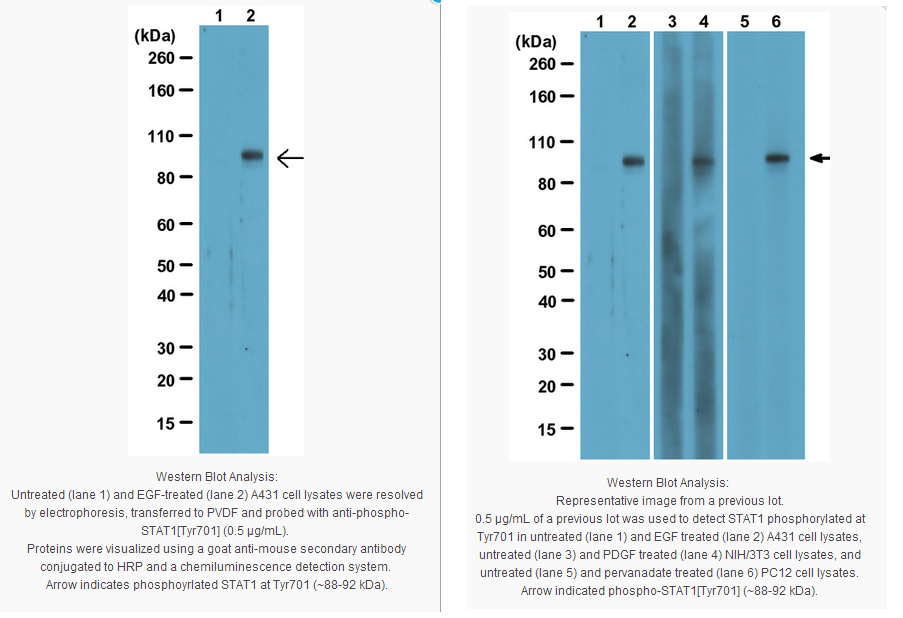

 |
|
||||||||||||||||||||||||||
描述:
| Species Reactivity | Key Applications | Host | Format | Antibody Type |
|---|---|---|---|---|
| H, R, M | WB | M | Purified | Monoclonal Antibody |
| Applications | |
|---|---|
| Application | Anti-Phospho-Stat1 (Tyr701) Antibody, clone 5C9.2 detects level of Phospho-Stat1 (Tyr701) & has been published & validated for use in WB. |
| Key Applications |
|
| Storage and Shipping Information | |
|---|---|
| Storage Conditions | Stable for 1 year at 2-8ºC from date of receipt. |
| Packaging Information | |
|---|---|
| Material Size | 100 µg |
原厂资料:
| Species Reactivity | Key Applications | Host | Format | Antibody Type |
|---|---|---|---|---|
| H, R, M | WB | M | Purified | Monoclonal Antibody |
| Applications | |
|---|---|
| Application | Anti-Phospho-Stat1 (Tyr701) Antibody, clone 5C9.2 detects level of Phospho-Stat1 (Tyr701) & has been published & validated for use in WB. |
| Key Applications |
|
| Storage and Shipping Information | |
|---|---|
| Storage Conditions | Stable for 1 year at 2-8ºC from date of receipt. |
| Packaging Information | |
|---|---|
| Material Size | 100 µg |
说明书
本产品可用于的实验
京ICP备15036693号-2  京公网安备11010802025653 版权所有:北京逸优科技有限公司
0.12
京公网安备11010802025653 版权所有:北京逸优科技有限公司
0.12



